RCS marketing guide: Why RCS is a must for your marketing toolkit.
Supercharge your marketing strategy with Rich Communication Services (RCS) - the app-like SMS channel that’s transforming mobile messaging worldwide.
Contents
SMS may seem a little vintage compared to the interactive, multimedia messages made possible by digital messaging apps, but it’s still the go-to channel for marketers wanting to reach wide audiences quickly and at scale.
So, what if there was a way to combine that reach potential comparable to SMS whilst offering a more app-like experience? That's where RCS marketing comes in.
An evolution of SMS, Rich Communication Services messaging (RCS) lets marketers reach customers directly on their mobile devices with branded, media-infused messages—no app required. And it’s gaining traction fast, with more than 1 billion active users on android devices, and we know that Apple will support RCS on iPhone devices later in 2024.
In this article, we’ll look at how to build your RCS marketing strategy to make the most of channel and how marketers are already using it to surprise and delight customers in their RCS campaigns.
What is RCS marketing?
RCS marketing refers to how businesses use RCS mobile messaging to communicate and interact with their audiences. Unlike traditional messaging channels, RCS marketing can help businesses create interactive campaigns, using engaging elements like one-touch buttons, rich media cards, and suggested replies for one-way and two-way conversations. And what's more we know RCS messaging get's good user engagement according to Mobilesquared research.
Before we discuss the ins-and-outs of RCS, it’s important to understand the strategic drivers behind modern messaging protocols.
How RCS marketing can help you stand out from the crowd
SMS lets you reach customers with marketing messages at scale, but it’s likely your competitors are doing that too. There’s a real risk of your messages getting lost in an ocean of identikit texts that all follow the same template. There’s also the growing issue of social engineering attacks. More than ever, fraudsters are using SMS to impersonate trusted brands and manipulate customers into sharing their bank details or allowing access to sensitive data.
We like to think of RCS as an extension of SMS, with the benefit of tackling some of these pitfalls in SMS. And it's quickly gaining support from major carriers as an operator provided alternative to over-the-top (OTT) messaging apps.
We worked with existing clients on an implementing a post-RCS engagement survey to better understand what their customers think about the channel. Here’s a look at what they’ve had to say:
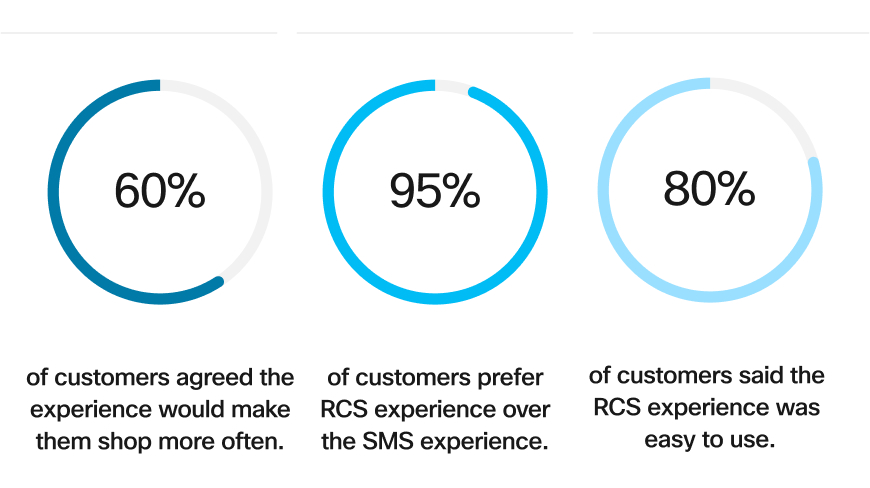
RCS marketing unpacked - what sets it apart from SMS?
RCS is a GSMA-defined messaging standard with integrated support for branded UI components, one-touch action buttons, suggested responses, and cards that display multiple fields of high-resolution media.
Branded logos appear in the title bar and conversation window, and you must be authorized as a legitimate business user to receive a verified sender checkmark. This way, customers always know it’s really you on the other end.
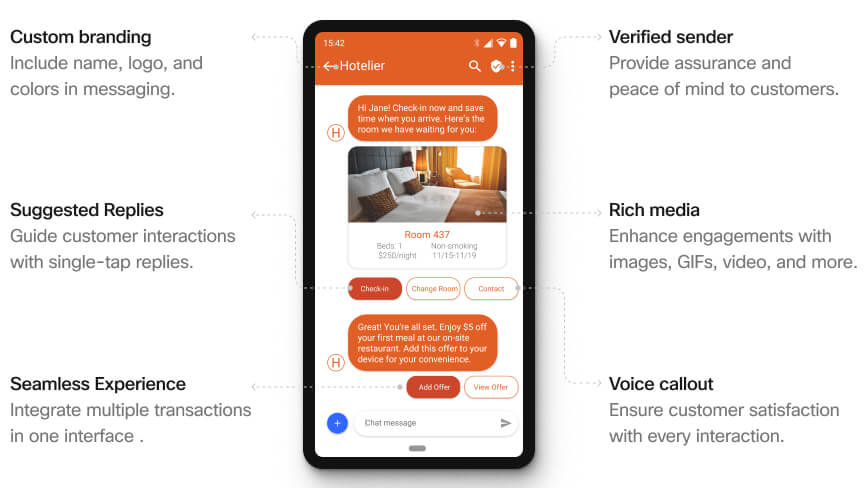
In a nutshell, RCS offers:
Brand verification to customers
Interactive, engaging features that are intuitive.
An app-like interface experience.
For all its digital glamour, RCS is extremely simple to use and understand, offering a comparable experience to the world’s most popular messaging apps. Plus, marketers are already using RCS marketing to create advanced conversational campaigns that encourage lasting brand loyalty and engagement.
For example, Vodafone utilized RCS for a bank holiday promotional campaign and achieved an 80% read rate among customers and a 25% response rate to the offer – a huge improvement over the 1% response rate with SMS and MMS. Likewise impressive, a seasonal Pizza Hut campaign delivered a 280% higher customer click-through rate when using RCS compared to SMS.
Find out more about the key differences between SMS and RCS.
Define your RCS marketing strategy
Embarking on an RCS marketing strategy needs consideration on how it will keep you on track towards your business’ needs and objectives, as well as thinking about how RCS fits within your omnichannel messaging mix.
Set clear objectives
Define what you want to achieve with your RCS marketing campaigns. Whether it's increasing sales, boosting two-way customer engagements, or offering superior support. Remember these objectives should underpin any activity and help you prioritize.
Segment your audience
Increase engagement by sending relevant messaging to each recipient. You don’t want to be sending promotions about local water sports events to someone living far inland for example. Have targeted audience groups, from location, age, gender, shopping preferences etc. These will help refine your 1-2-1 RCS messaging experience.
With our enterprise RCS marketing platform, Webex Connect, you can do all the above easily by integrating with your existing CRM database.
Get permission
Obtain messaging consent from the customer before sending them anything, this maintains trust and importantly follows regulatory guidelines. Keep in mind user consent regulations vary from country to country.
Create compelling content
Utilize the rich media capabilities of RCS to support your messaging content by making it interactive where relevant by sending:
Videos
Carousels
High resolution images
Clear call to actions (CTA’s)
Test and optimize, and then repeat
Do certain CTA’s drive little engagement? Are you seeing a positive impact on call deflection from RCS chat support? Remember your learnings are only as good as your analytics and reporting framework, keep refining what data you need to uncover where the opportunities are.
Webex Connect can make this even easier, with pre-built dashboards monitoring campaign performance, even down to micro engagements from clicks, one-way and two-way response rates.
Just what can marketers do with RCS?
Building RCS into your marketing strategy opens up a whole new world of strategic possibilities. Where SMS requires users to manually type responses or tap through to web pages or apps to complete an action, RCS can accommodate everything from AI-infused self-service to eCommerce, entirely in-channel.
RCS marketing examples
Here are a few RCS marketing examples to enhance campaign interactions and streamline the customer experience:
Simplify promotional engagement: Help customers take instant advantage of timely promotions, such as reward coupons, by pressing contextual buttons. For example, a customer can claim a coupon for $10 off their next purchase just by tapping “use offer” within the RCS conversation.
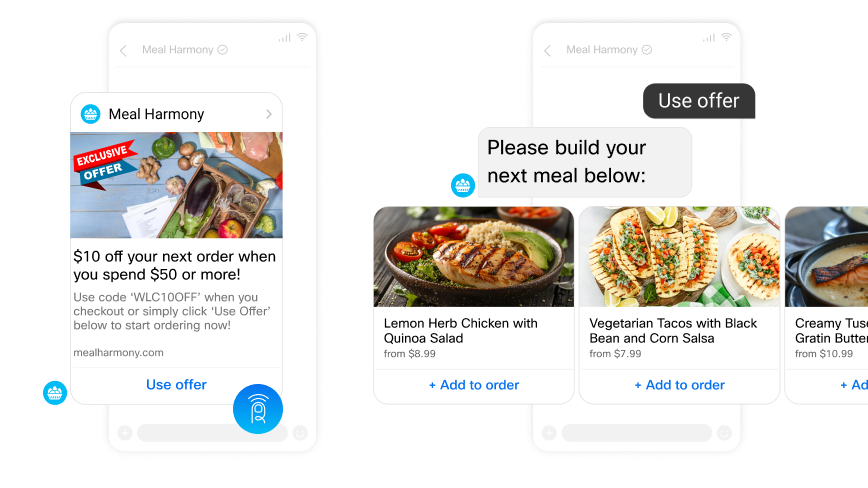
Orchestrate proactive notifications: Keep customers informed and engaged with timely updates, such as abandoned cart reminders, delivery updates - make it easy to instantly respond and remedy issues. You can also simplify loyalty program sign-ups and consent management with one-touch actions.
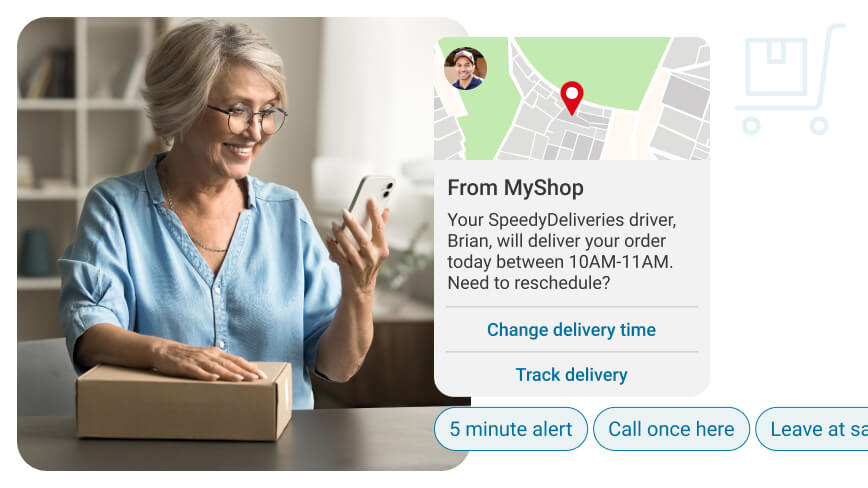
Integrate multiple transactions: Build joined-up customer journeys and populate single-tap buttons with recommended actions to help drive engagement. For example, hospitality marketers may use RCS marketing to promote a discounted hotel break or send all the booking information the customers, such as their boarding pass. Customers can check-in, change their room, and even book a discounted meal in a single RCS interface.
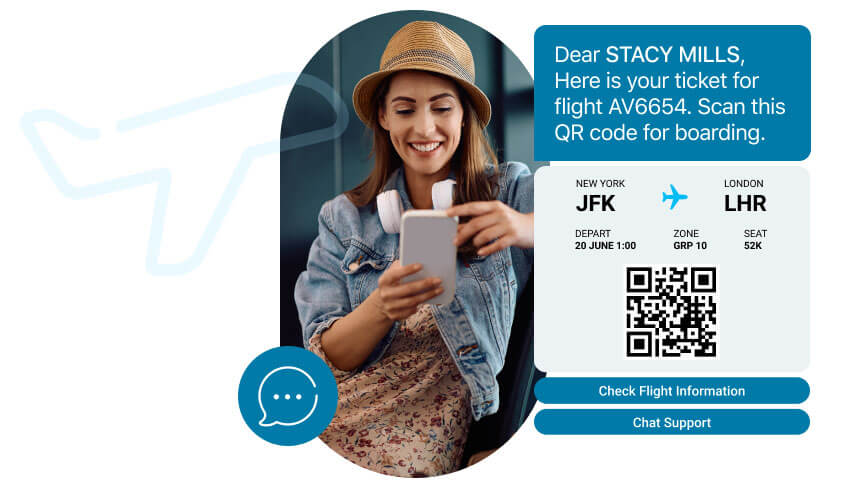
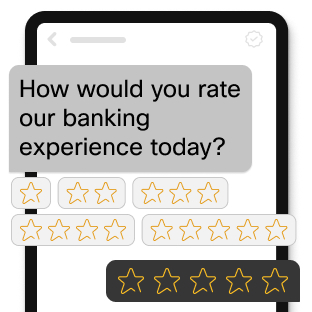
Encourage customer feedback: Use interactive RCS components to create multiple choice polls and collect feedback from your customers. When combined with back-office data, you can tailor your surveys and polls to build a clearer view of the customer experience.
Find out more on how to apply RCS in your messaging with these handy reads:
RCS marketing in action
Over the years we have helped quite a few of our customers adopt RCS marketing with slightly different use cases and objectives. Check a couple below or find out more in our recent RCS marketing case studies blog.
OneSource: a debt resolution service provider based in the UK. They wanted to enhance customer trust in an era dominated by fraud and scams.
Using Webex Connect, OneSource integrated their existing SMS alerts system with TelSolutions. They were able to deploy RCS payment reminders where customers could conveniently make payments without leaving the chat, increasing payment rates by 30% and read rates to 92%, up from 59% in 2022.
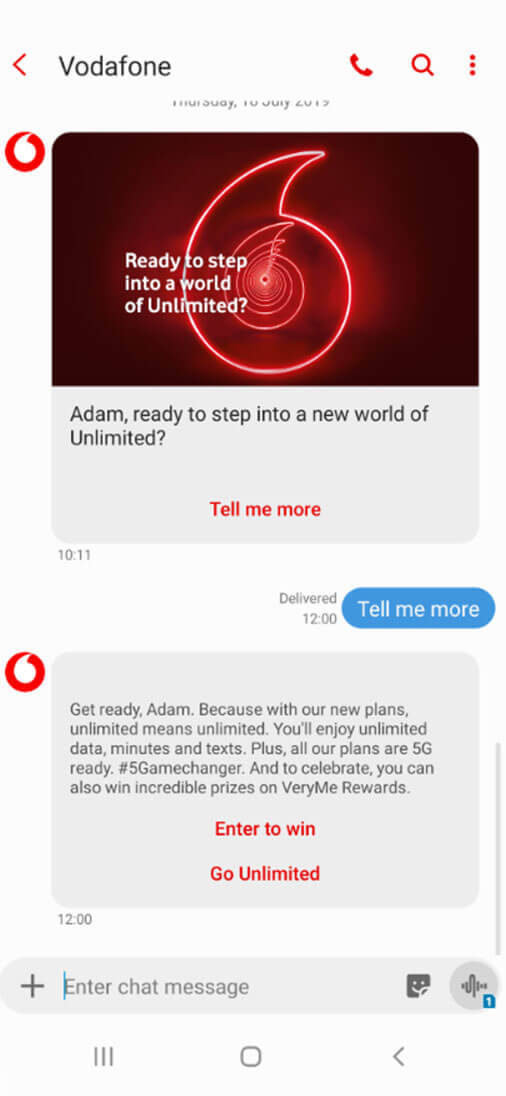
Vodafone: a leading mobile network operator and was the first UK network provider to support RCS messaging across Android mobile devices.
Vodafone were experienced in using SMS and MMS, but they were keen to engage with customers using two-way digital experiences. We helped them launch promotional campaigns across RCS in addition to the above channels. While SMS and MMS scored a response rate of 1%, RCS scored 25% by comparison.
5 Tips for effective RCS marketing
Crafting successful RCS marketing campaigns requires a blend of creativity, and a good understanding of your audience's needs. And with a lot more choice in how you can format RCS messages with no character limit, it feels as though the possibilities are somewhat endless? So what are the most effective RCS marketing best practices to get started with? We have chosen our top 5 below.
1. Visual storytelling
Communicate your brand's story or messaging through vivid images and videos. Maybe you want to give your customers support on how to set-up their broadband or give them the latest travel updates on their daily commute. Use how to videos and images showcase this information. This will not only captivate user attention but also gives you a unique brand identity in the process.
Remember to also use smooth transitions between visual elements to create a narrative that flows naturally within the chat interface.
2. Interactive elements
RCS marketing isn't just about delivering information; it's about sparking action. Embed multiple buttons that encourage immediate responses, like "View Details" or "Claim Offer," to drive user engagement and conversions.
Simplify the user experience with quick reply options that guide customers through a predefined journey, making their decision-making process as effortless as possible.
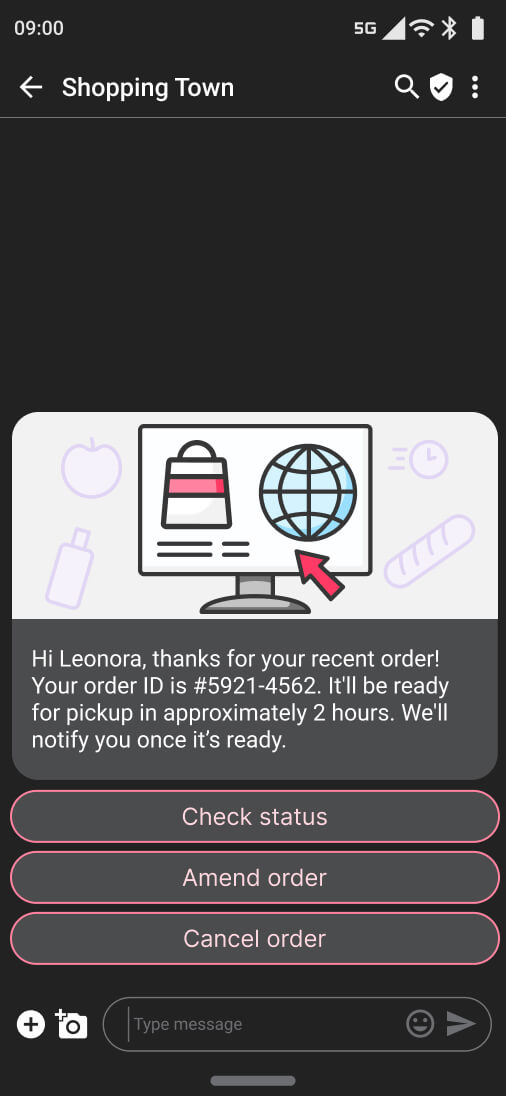
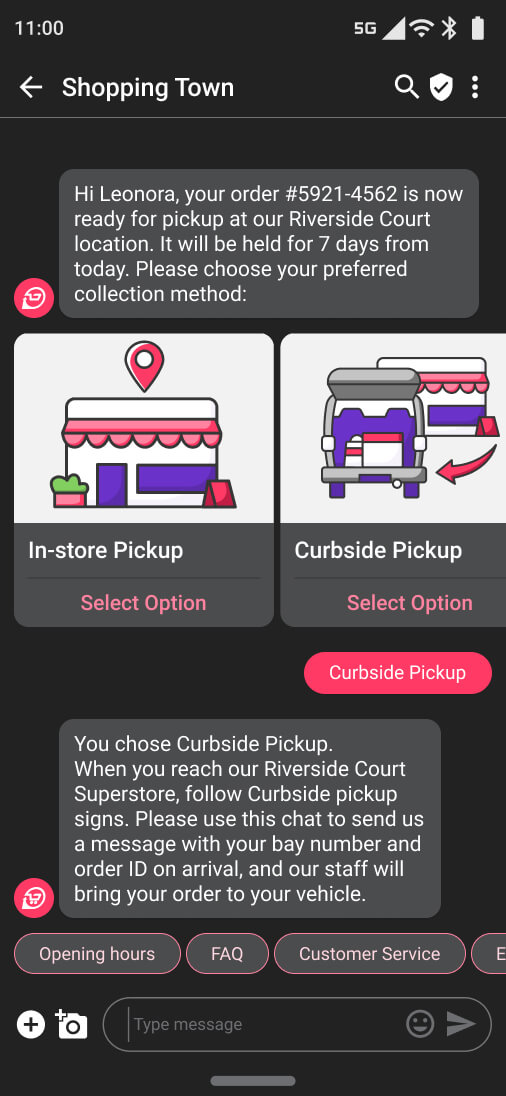
3. Tailored experiences
Use audience segmentation to create more tailored RCS marketing content that appeals to different customer groups. You might find two-way interactions are more successful for users in the 18-30years age bracket compared to above 55years for example. Each audience has their own preferences and messaging behaviors, so always review your campaign data for insights before making any optimizations.
Maybe this sounds too obvious but it must be said, address recipients by name and reference their past interactions to make the conversation feel one-on-one. You can learn quite quickly whether your messages are landing with your target audience with read receipts.
4. Stay relevant
Timing can make or break your RCS marketing efforts. Send messages when your customers are most likely to engage, whether it's a timely promotion or an update to their subscription for example. Contextualize your communications based on current events, user location, or behavior patterns to ensure your RCS messages are always pertinent and welcomed.
5. Pick your use case
Think about the type of interaction you require from each use case and its goal. Maybe you want to send recipients a one-way notification, or send something more interactive in a series of prompts, like a survey or an updating billing information for example. Be clear on what the use case is and the business goals before designing what the flow of the message will look like.
Remember, the goal of RCS marketing is to build a rapport with your customers, turning each message into a stepping stone towards a long-lasting relationship.
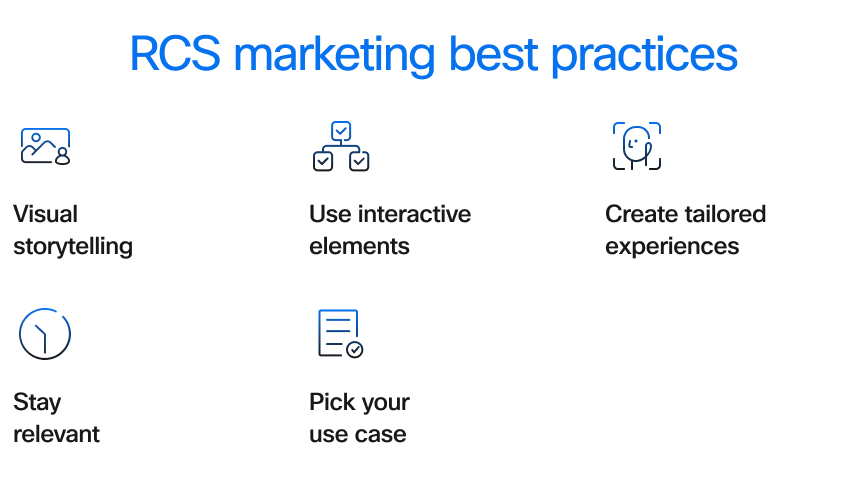
Integrate RCS marketing into your omnichannel strategy
When you combine RCS messaging with a Communication Platform as a Service (CPaaS) solution, you can automate and orchestrate customer journeys across RCS and the latest digital channels.
The best CPaaS solutions can integrate RCS with your back-office systems to enable a seamless exchange of data. They also include intuitive journey builders with simple drag-and-drop components. This means even non-technical users can create personalized campaigns and trigger interactions based on pre-defined scenarios and real-time customer behavior.
When you integrate RCS with CPaaS, you’ll also gain easy access to valuable granular metrics, including how many people open messages and who is looking at what. This insight can help optimize future campaigns, inform personalization, and improve strategic decision-making.
With Webex Connect you can integrate RCS into your omnichannel strategy and build compelling marketing experiences that drive brand loyalty and meaningful customer engagement.
Frequently asked questions
-
What is RCS in marketing?
RCS in marketing refers to the use of Rich Communication Services for business messaging. Sending conversational, interactive messaging to their audiences’ mobile devices. RCS can be used for a variety of use cases across marketing with the channel’s capability to support high-resolution images, videos, carousels, and quick reply to buttons.
-
What does RCS stand for?
RCS, also known as RCS messaging, stands for Rich Communication Services. It's a communication protocol that enhances traditional text messaging (SMS) by adding features typically found in modern messaging apps, like WhatsApp and Facebook Messenger.
-
Is RCS messaging safe?
RCS messaging is designed with several security features to protect user privacy and data. It often includes end-to-end encryption, which means that messages are encrypted on the sender's device and can only be decrypted by the recipient's device, safeguarding against interception by third parties. Additionally, RCS protocols can include measures like message integrity checks and sender authentication to prevent fraud and spoofing.
As with any communication technology, the level of security can vary depending on the network providers and the implementation of RCS standards. It's important for businesses to work with reputable RCS providers that prioritize security and comply with industry regulations to ensure the safety of their RCS messaging.